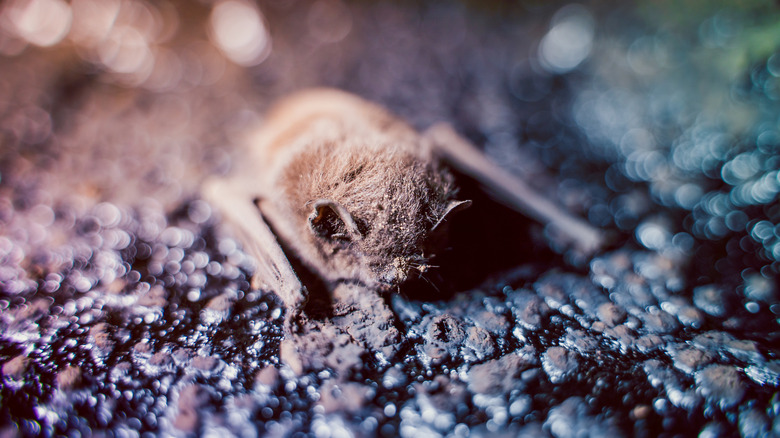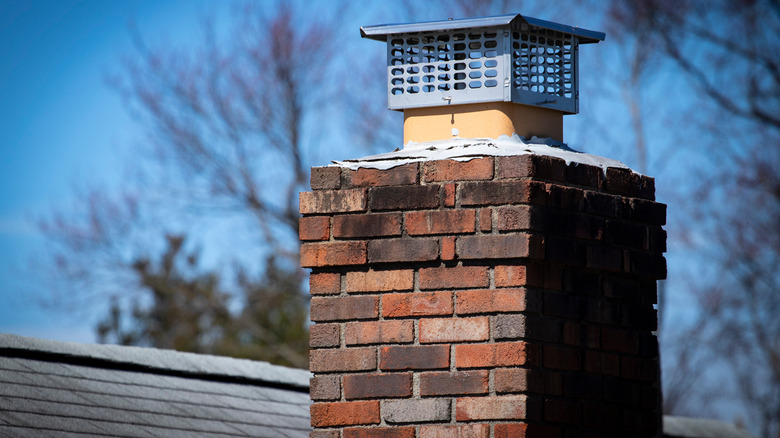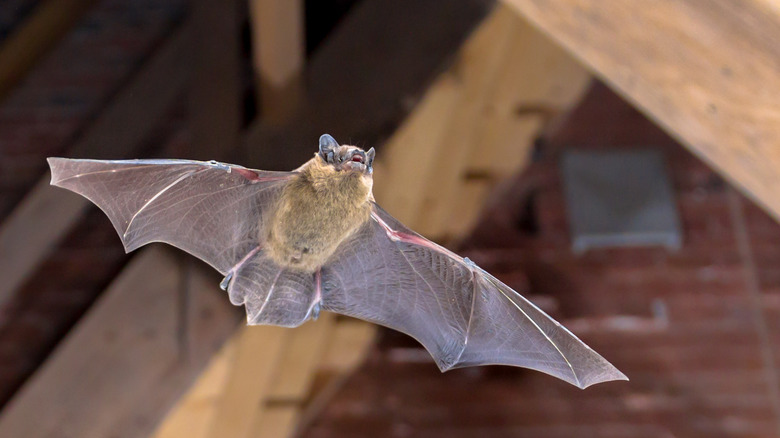The Crucial Mistake That's Sure To Attract Bats To Your Home During Winter
Bats are not an animal you want to tolerate in your home. While most bats are not aggressive, they will defend themselves, and when they do, they are prone to spread disease to humans and pets. For that reason, you don't want to do anything that will attract or encourage bats to enter your home. One surprising yet crucial mistake you may be making that's encouraging bats to call your home their winter safe haven is not protecting your chimney.
As is the case with many other creatures, winter often encourages bats to seek shelter, and the opening at the top of your chimney may be just the right destination for them to get in and hide from the colder weather. Bats, along with other wildlife, can get into your chimney if they can access the area. One of the best ways to prevent this is to ensure your chimney has a cap on it. A cap allows for smoke and air to move out of your fireplace and up the flue so it can filter outside of the home. However, the cap prevents animals like bats from getting into the chimney to make it their home.
A bat infestation can cause a number of health risks for people and pets, mainly owing to their urine and feces dropping into your fireplace. They can also cause potential damage to your chimney. For that reason, you need to determine if there may be bats in your chimney and how to get rid of them if there are.
How to know you have bats in your chimney
The first step is to consider if bats have access to your chimney. It's not generally safe to climb on your roof during the winter months, but if you stand far enough away from the structure, you should be able to see the top of the chimney. Look at the top to determine if there's a cap on it. It may be made of metal, such as stainless steel or copper. Typically, caps can be flat or round, or they may look like a cage sitting on top of the chimney. They are fitted to the opening of the chimney and may have a cover over them to help keep the weather out. If there isn't one there or it has been damaged, that could mean pests have made their way into the chimney.
To know if there are bats, pay attention to the sounds you hear in the attic or chimney itself. You may see the bats flying around, but that's less likely than spotting other signs, such as the oil streaks they can leave in various areas of the home or their droppings that may be in the fireplace. You may also notice black droppings on the insulation in your attic space. Remember, bats don't want to be around people and tend to be out only at night. If you see them during the day, that could indicate that the bat is sick, and you should call a professional to have them removed safely.
How to get rid of bats in your chimney during the winter months
If your chimney is missing a cap or there's significant damage to it, have a roofer come out to inspect, seal, and replace it. That's going to help keep all pests out of your chimney as a starting point. You may also want to take a few additional steps to make your home less attractive to bats, such as caulking windows and doors, removing dead or dying trees from the property, and getting rid of overgrown vegetation that creates a hiding spot for them.
When possible, turn to a professional for bat removal, especially if they are present during the daytime. If they are flying around your home, open the nearest door or window, turn off the outside lights near the door, and keep the area quiet to encourage them to leave. Bats don't navigate out of your home by sight but rather by echolocation, which means they need to be able to hear the open door to move that way. Any noise will make it much harder for them to navigate the space. Once out, clean the area and seal it off to prevent bats from coming back in.
Also note that certain species of bats are federally protected, which means you shouldn't kill them. If you feel inclined, you can create a bat house that provides a new place for them to live far away from your chimney.


